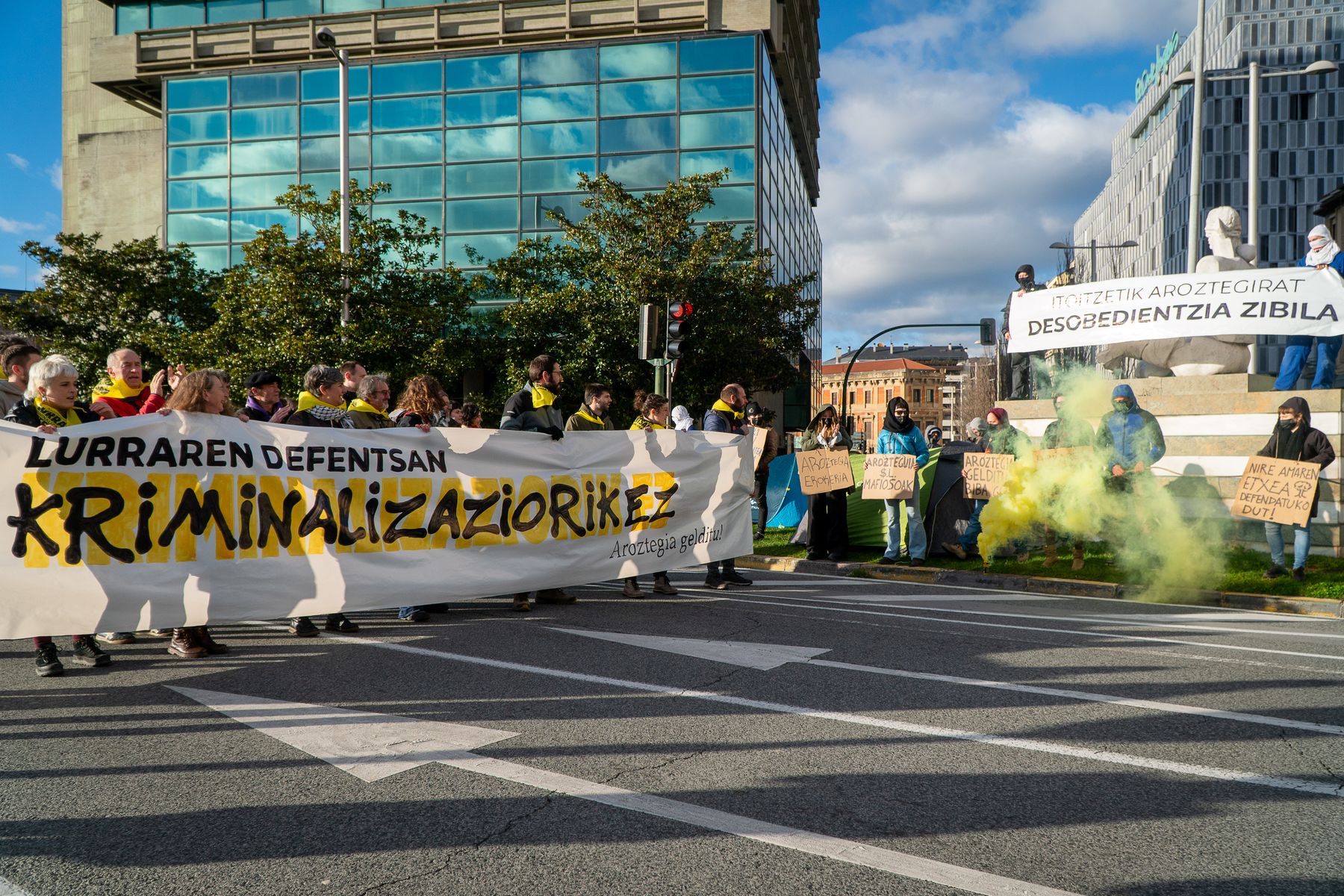Now the decisions
- Despite the fact that the stadiums did not fill up, thousands of people participated on June 21 in the chains of fabrics and giant parties organized by Céesku dago in the capitals of Euskal Herria. The popular movement for the right to decide announced the beginning of a new phase, “with ambition and determination”.

Once again, the dynamic Qatar Dago has brought thousands of people together in favor of the right to decide. The squares, streets and stadiums of the five capitals of Euskal Herria were filled with people and the citizens were able to enjoy spectacular images, with colored fabrics that have served as a symbol of the initiative.
The main event this year already had the ingredients to be a success. On the one hand, the force for the movement has been the illusion that emerged from last year's waves of the human chain. This muscle has been perceived in many towns and neighborhoods: there are already more than 230 commissions that the initiative has in all the territories of the Basque Country. Evidence of this is that Tours Esku Dago has also taken root in Ipar Euskal Herria, as we have seen in Baiona. From the point of view of territoriality, too, it is a qualitative leap.
On the other hand, the event was supported explicitly by many political parties, institutions and social partners. Thus, the PNV and EH Bildu, for their part, “encouraged” citizens to participate in the acts. Two weeks earlier, Šesku dago brought together 80 personalities from the world of society, culture, politics and sport with the same goal. They have also highlighted the resources allocated this year by Basque public television to publicise and follow the initiative.
The fabric chains and the pasacalles of the morning were animated, the streets were filled with people with the same joy of last year. In the afternoon the aim was to complete the stages and the bulls, but the initiative has not been carried out. In the bullring in Pamplona, for example, the sun stands were quite empty and in San Mamés large gaps were also observed. The organization itself acknowledged in a statement that the afternoons had placed “the empty, even-handed chairs”: “Those empty chairs are the offer we make to the citizens that we have not yet joined them. With humility, determination and will. Because we believe that there are still owners of those chairs in this town.”
Those responsible for the initiative will have to look in the next few days at what has failed in order not to fill the gaps, but it seems clear that the initiative needs a new incentive to advance the right to decide. It is precisely the platform that has announced in its main message that from now on “the age of decision begins, the final phase”. For example, the popular consultations that will take place next year in several localities of the Basque Country could be related to that. First, it was the 21 municipalities of the Goierri that announced the convening of a joint consultation, while last week Dima, Ispaster and Hernani were incorporated. If this wave persists, we will soon see how far its influence can go.
In any case, the right to decide on small-scale daily practice can also be used to activate people and deal with problems, as it has been in disobeying LOMCE or creating culture chambers. What do we want to decide if it is not to solve the many conflicts we are experiencing in this country?
The year 2025 will lead to a general policy of establishing shorter working weeks, bringing low costs for new hires for companies and an effective direction of change in labour relations.
With the aim of complying with the Spanish government agreement, the reform to shorten the... [+]
Nafarroa Beherean, Aiherrako 'Beltzegitea' etxean kokatuko da Eguzkilore haurtzain-etxe berria. Euskara, natura eta motrizitate librea oinarri harturik, heldu den apirilean hasiko dira zerbitzua eskaintzen.
Iñigo Cabacas Herri Harmaila taldea eta Athleticen arteko harremana nahaspilatuta dago azkenaldian. Iñigo Cabacas Herri Harmailako Iñigorekin hitz egiteko aukera izan dugu astelehenean.























